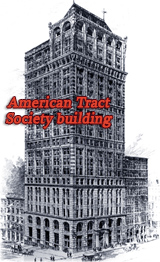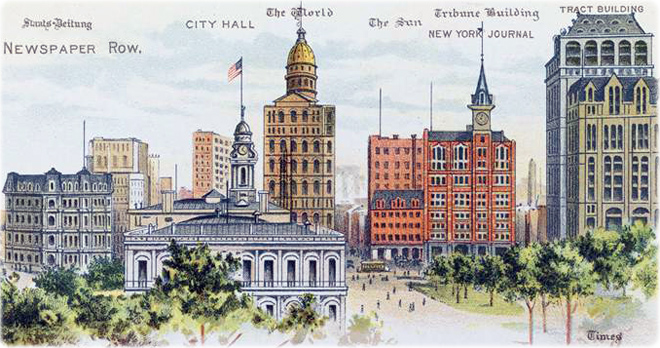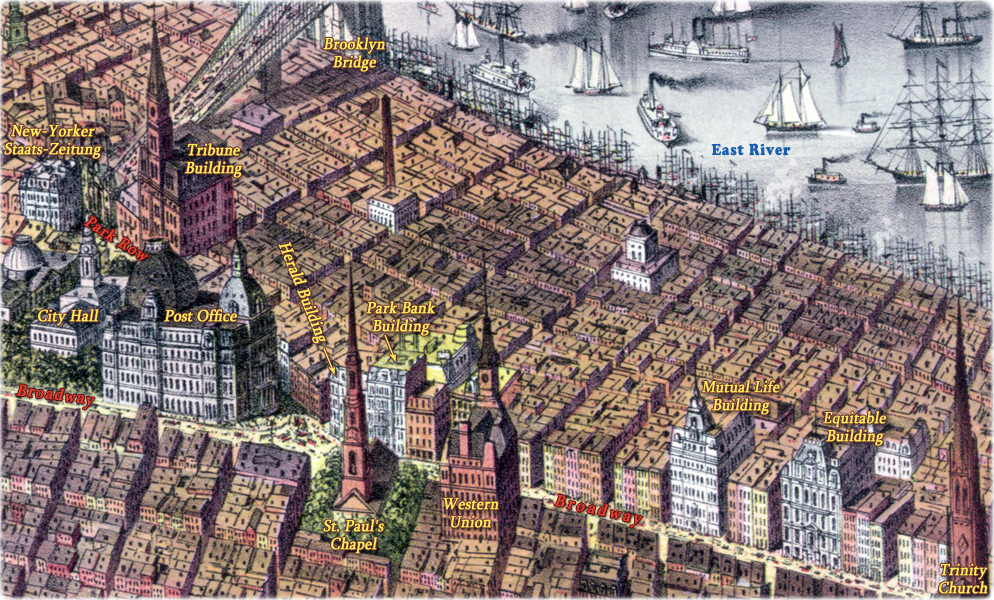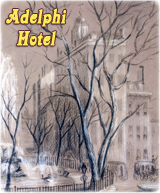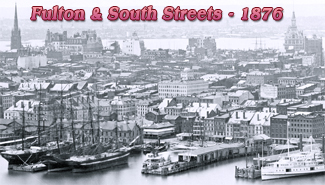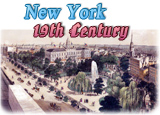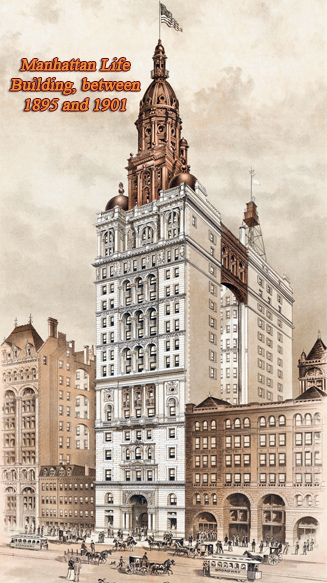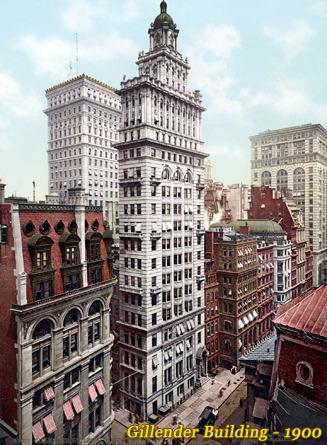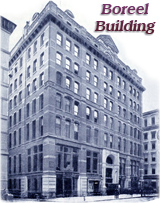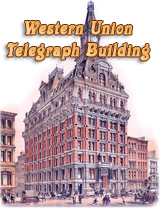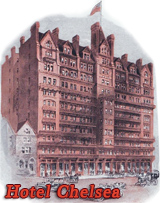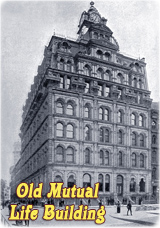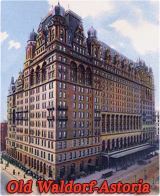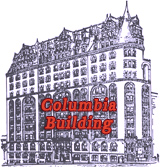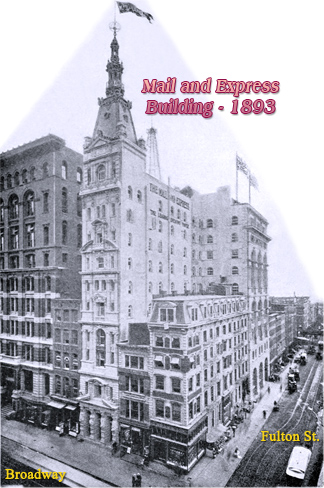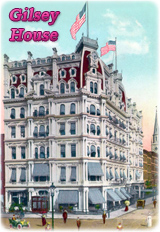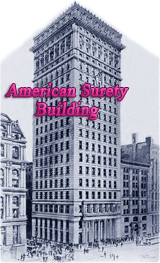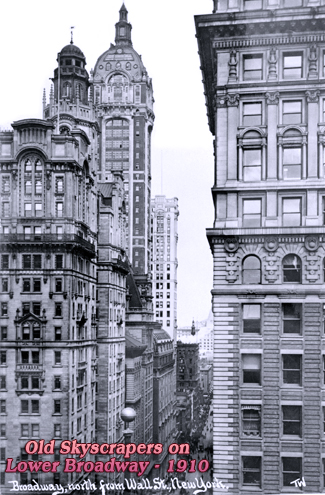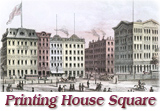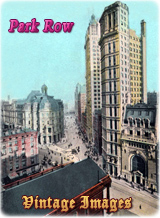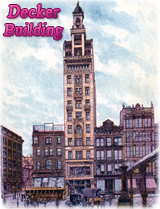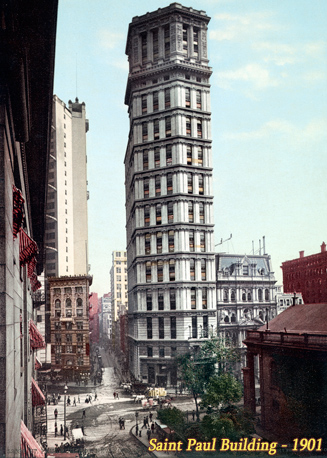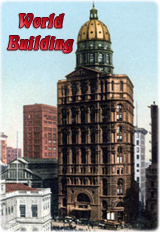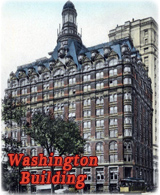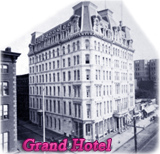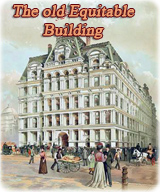The rise of
skyscrapers in New York City started in the late 1860s with the construction of buildings with more than six floors, equipped
with hydraulic passenger elevators. Most of them were built by insurance
companies, newspapers or hotels. But it was in 1875, with the construction of
the Western Union and Tribune buildings, which surpassed the spires of the
city's old churches, except Trinity Church, that the height of the buildings
began to really stand out in the city's skyline. A large number of workers died
during those heroic times of the construction of the early skyscrapers, due to
the lack of adequate safety measures.
In the early 19th century, church spires dominated the sky. The tallest were Trinity Church (second temple), St. Paul's Chapel (220 feet tall) and Brick Church. Tall buildings of the time typically had four stories and an attic, sometimes with half of the basement above ground. An example was the commercial building owned by Najah Taylor and others (see engraving on the right), on the northeast corner of Broadway and Wall Street at 88 Broadway, built between 1809 and 1816.
The imposing Merchants' Exchange building on Wall Street was completed in 1827, with a cupola at the top rising 120 feet high. It was destroyed in the Great Fire of 1835.
Around the 1830s, there were few buildings in New York with six floors above ground. One of the first was the Adelphi Hotel in Bowling Green, erected in 1827 (in fact, five stories plus attic and part of the basement above ground, with a dome on top). Holt's Hotel (opened in 1831) was another one. The Pearl-Street House was seven stories high when it burned down on August 23, 1853.
The spire of Trinity Church (284 feet), completed in 1846, became the tallest structure in New York City, but, from 1853 to 1856, the wooden tower of Latting Observatory (315 feet / 96 m), built as part of the 1853 Exhibition of the Industry of All Nations, adjoining the New York Crystal Palace, was the tallest structure in New York. In 1888, the Trinity Church's spire was surpassed by the spires of the St. Patrick's Cathedral (329.6 feet).
Passenger elevators were essential equipment for developing taller buildings. Elevators powered by water wheels, human or animal traction, have been used for millennia. Archimedes, the Greek mathematician, developed an elevator in 236 BC, based on both: water wheel and animal power. The technology was improved in the Roman times by the use of counterweights to bring gladiators and animals into the arena. In the 18th century, passenger elevators, with this old technology, were in use in some European palaces. In 1793, Ivan Kulibin, a Russian mechanic, built an elevator with a screw device for lifting a passenger elevator. But the steam engines reached its critical efficiency point in the late 18th century and was a revolution for mechanical power.
In New York, a steam-powered freight elevator was in use in 1850. A steam passenger elevator was announced for the Latting Observatory in 1853, but there is no record of its use in the contemporary press. Instead, Elisha Otis demonstrated at the Cristal Palace, in the same year, a steam elevator with a safety device that would prevent an elevator from crashing if a cable broke. In 1857, the first passenger elevator carried customers up to the fifth floor of the Haughwout Building, a department store on Broadway. It was too slow, though. The six-story Fifth Avenue Hotel, completed in 1859, was the first hotel in the United States to be equipped with a hydraulic passenger elevator. Electric elevators became common by the late 19th century.
The race to build increasingly tall buildings in NYC began around 1868, when the Grand Hotel was completed on Broadway, with eight stories above-ground, including a two-story mansard roof, and about 120 feet high. The Old Mutual Life Building was completed by 1869, with seven stories and half basement above-ground. The construction of the 130-foot-high Equitable Life Building began in 1868 and it was completed in 1870, with seven stories plus half of the basement above ground above-ground. About 1872, the Old Mutual Life Building added a clock tower, reaching almost the height of the Equitable Building. Gilsey House was completed in April 1871 with eight floors (including three in the mansard roof) and 125 feet high, from the sidewalk to the chimney tops. The eight-story Windsor Hotel opened opened in 1873. The eight-story Bristol Hotel opened about 1875.
In February 1875, the ten-story Western Union Telegraph Building was completed and became the tallest building in NYC, with 230 feet high at the top of its clock tower, the first building to surpass the height of the St. Paul's Chapel (220 feet). In April, the Tribune Building, opened its doors with 240 feet, from the street to the top of its clock tower. In May, the same year, the 9-story Evening Post Building, corner of Fulton Street, was completed. It was, however, much smaller than the previous two, 140 feet high.
